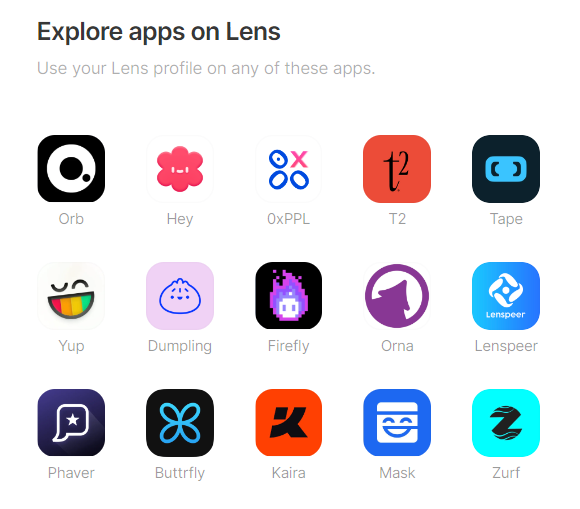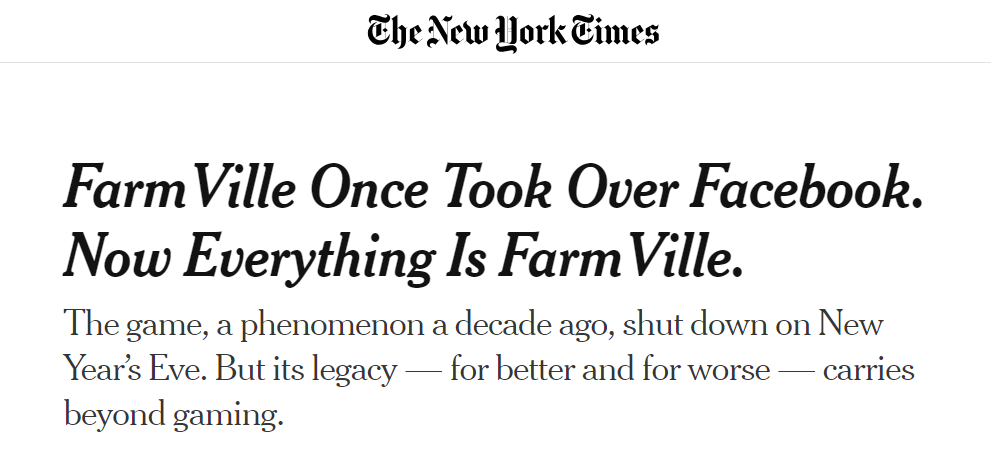Lens has lost the traction it initially had, and the activity does not meet the expectations we all had for the project. This statement does not imply denying that it is currently the leading Crypto Social Networks initiative, a position it now shares with Farcaster. These networks have managed to consolidate a reasonable level of activity, unlike other initiatives such as Friend Tech, whose activity is practically marginal.
I think it is important to start by acknowledging the impressive work done by the Lens team, and especially Stani's effort in leading this project, dedicating many more hours than would be considered healthy. My respect to the entire team.
However, I believe the goal for Lens is much more ambitious, and it is clear that it needs to surpass traditional social networks.

The reality is that the network has lost that sense of excitement and growth it once had.
It is not easy to analyze the reasons, and in any case, many external events also have an impact on this situation. However, I think it is interesting to carry out this exercise as it might help in making strategic decisions. A success for the project would be a shared success (or so one would hope), and this aligns more with using collective intelligence in this process and also trying to externalize the collective effort to achieve it. I will try to include more improvements that you suggest to me in this article.
The first step is to establish the foundation of the objectives, even though this journey should lead us to discover new capabilities that social networks should have. The basis of what I believe should be the value proposition of these social networks is as follows:
-
Decentralized Social Network: This should be the ultimate goal, although initially, the need for agility might require assuming a certain leadership, but that should be the objective. In my view, this goal is impossible to achieve without an underlying decentralized infrastructure and a governance token.
-
Achieve a Billion of Active Users and become the largest hub of online activity: This should lead us to a social network that reaches billions of active users, creating the largest ecosystem of online content and applications.It is an excellent opportunity to disintermediate one of the largest technological monopolies that have been created, allowing for a much fairer distribution of value creation.
Strategies to achieve these objectives
These strategies should include a prior analysis, a rationale for why we believe they would help achieve the objectives, and metrics to observe the evolution of the strategy if implemented.
APPs on Lens need to be Open Source
Decentralizing the clients seemed like a correct strategy, but the reality is that we find ourselves with an ecosystem of applications that lack the necessary financial resources to develop an application with all the basic required functionalities. Additionally, these development efforts are carried out on proprietary code, so the effort spent on developing similar functionalities is significant, rather than focusing on new functionalities or specialization.
I believe it is necessary to reconsider this strategic decision in order to create at least an open-source codebase that could be used as a foundation to later customize or expand these developments. It is truly complex for the ecosystem to make a significant leap without an exceptional user experience. This requires far more resources than what these teams currently have.

I usually use ORB, which is an excellent application, but it does not evolve at the speed the ecosystem needs. The application still lacks basic functionalities like messaging between users. It does not have integrated applications, and the groups are really limited and cannot be accessed from desktop applications. Not having a desktop application severely limits the ability to provide quality content, especially written content.
As a desktop application, I usually use Hey, which does not have groups and lacks a web application. The structure is extremely simple, and there is no noticeable evolution. It does not allow for organizing the content that is viewed.
Recently, I have tried OxPPL, which seems to be very focused on each user's portfolio, something that is not useful for me since I use other tools to track that information, and I am unable to view the content. Additionally, it does not have a desktop application. However, the interface shows excellent UX work.
Other applications like YUP or Firefly are multi-social network, which really obscures the activity on Lens and does not fully leverage the capabilities of that network.
There is not much information about these applications on the Lens website, and there is no additional help or news about their updates to showcase the best of the ecosystem. The effort required to learn about the possibilities of accessing the network is extreme, aside from the usual issues of having to authenticate with a profile from different environments. It is not easy to have the same wallet on both mobile and computer, especially if we use hardware wallets, which is common with profiles where we have our financial assets. Initially, it was much easier to access Lens because, although there were fewer options, this simplified the onboarding process. It is challenging to have many general social media applications, and this possibility makes interaction between all users more difficult, as each app has its own spaces or communication formats, further fragmenting the community.
These applications bring us back to the world of proprietary code, which stifles innovation and agility. I believe Lens should not completely delegate this responsibility. I think Lens needs its own ConsenSys
Metric: downloaded and active apps
Lens Reputation Score
Lens Garden was one of the most interesting projects on how to gamify reputation on the social network. I believe that these models of signaling to all users the importance of contributing to the network are an excellent growth lever.

There were other applications that showed your activity over time and provided profiles. However, Lens cannot capitalize on all this reputation when it does not have control over at least one application. Incentives are really important in these projects, especially considering that the only way to grow these projects is virally. It is crucial to rely on the Lens fan community, which currently lacks public recognition

Growing a network is as simple as motivating the 500,000 users it currently has, or the 50,000 active ones, to invite their friends. I don't think anyone can recommend the network better than its most active users, and it is only necessary to find the lever that encourages them to do so and makes it easy for them.
Metric: Reputation based on invited users, activity, content, followers, etc.
Tipping: the new primitive for curating a social network
Tipping has probably been one of the most important innovations in social networks since Frames. Content curation through token payments earned by reputation on the social network has been a major activity driver for other social networks. Degen is the token that demonstrated this playbook. Bonsai seems to want to take on this role within this network, but not with the Tipping strategy, which is a completely different dynamic. In this regard, we will see the relationship between memecoins and crypto social networks, two phenomena that have many similarities.

I don't think a crypto social network can compete without a memecoin strategy.
Metric: Crypto Social Memecoin marketcap.
The Revenge of Zynga
It is possible to think that a network should not be a gaming site, but the reality is that Zynga's success on Facebook was so wild that the social network ended up banning it. Perhaps it is time to explore what Facebook prohibited. Telegram has now reached 250 million users with Hamster. I think it is worth exploring this highly social gaming space and finding ways to organize it to make it compatible.

Metric: Gaming activity in the Network
Conclusions
We must not forget that we are in the entertainment sector and that social networks are the meeting point for our activities. It is important for all of us to bring millions of people to Lens to connect and have fun. There should also be space for quality content that should be rewarded. Lens currently has 500,000 registered profiles, and I believe it is time to organize ourselves to create the social network we should have. An open project where anyone can contribute to its improvement and create this Ownership Economy, where we can all be owners of this new major technology based on our contributions.




评论 (0)